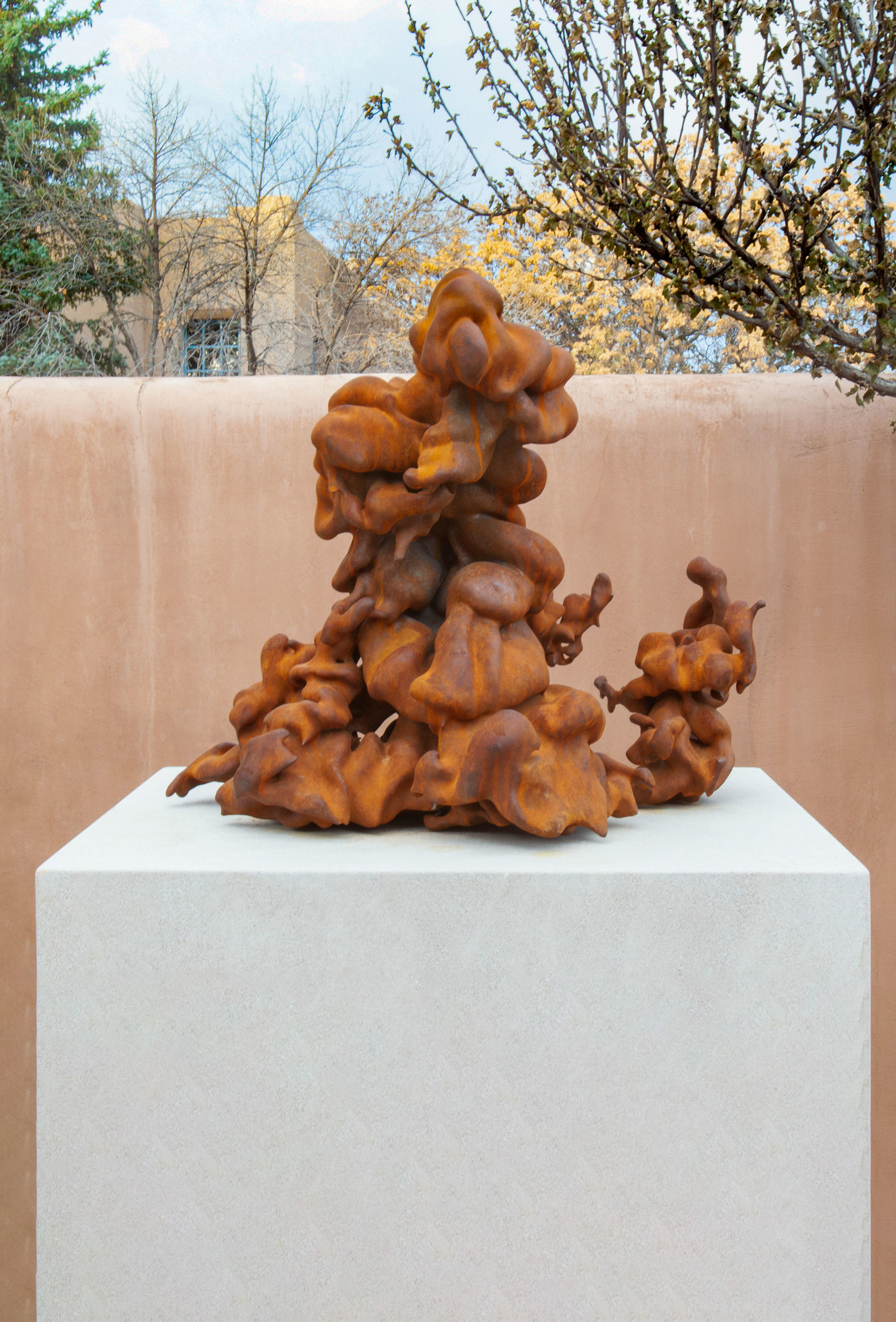Karen LaMonte
Cumulus 1:6, 2020
Rusted Iron
19 1/4 x 23 x 17 1/2 inches
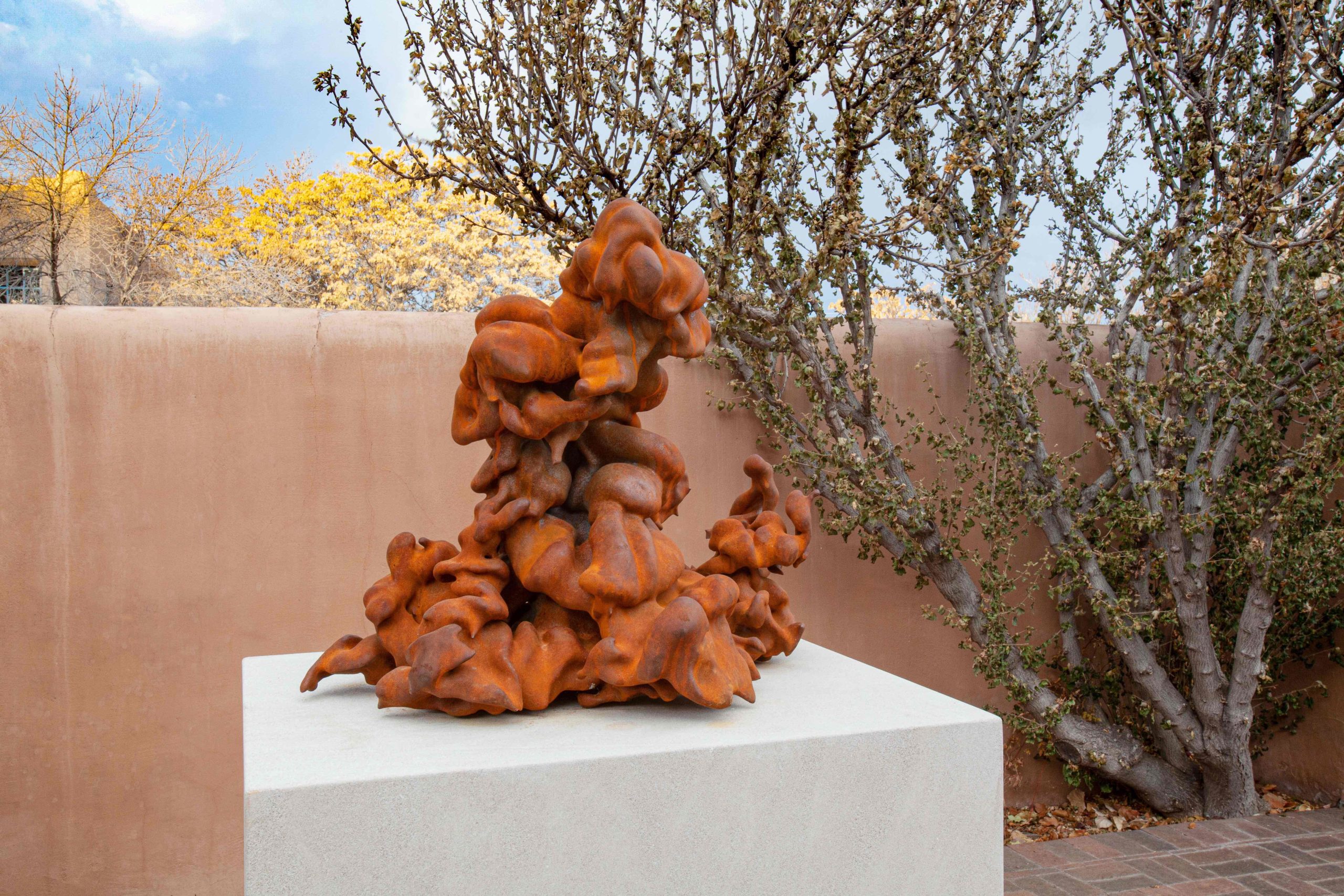
Karen LaMonte remembers speculating, as a child, that clouds were made by the power plant she could see from her bedroom window in New York City, “I would watch billowing steam climb from its chimneys into the sky. My fascination with clouds has never ended.”
As an adult, LaMonte has pursued this fascination from myriad angles, studying the iconography clouds represent in the religious depictions of Renaissance paintings, as well as in east Asian religious art and Islamic esoteric representations. She has also considered clouds from a climate perspective, finding poignancy in the ways changing weather patterns have altered the manifestation of some cloud types often portrayed in historic art, driving some toward extinction.
Similar to the ways artists like John Constable have conceptualized clouds as allegories and metaphors; LaMonte says that she “sees clouds as a powerful mirror for inner activity—a barometer of human feeling expressing the transience of emotion with muscular visuality.” It follows that clouds have long influenced her stylistic choices, though they have only recently become primary subjects of a major body work.
Lucy Lippard has written that, “unlike many artists (though Agnes Denes comes to mind), LaMonte is an avocational scientist or valuable scientific collaborator, bringing together the artist’s curiosity with the scientist’s factual caution.”[1] In demonstration of this approach, LaMonte applied a scientific foundation to devise her Cumulus body of work.
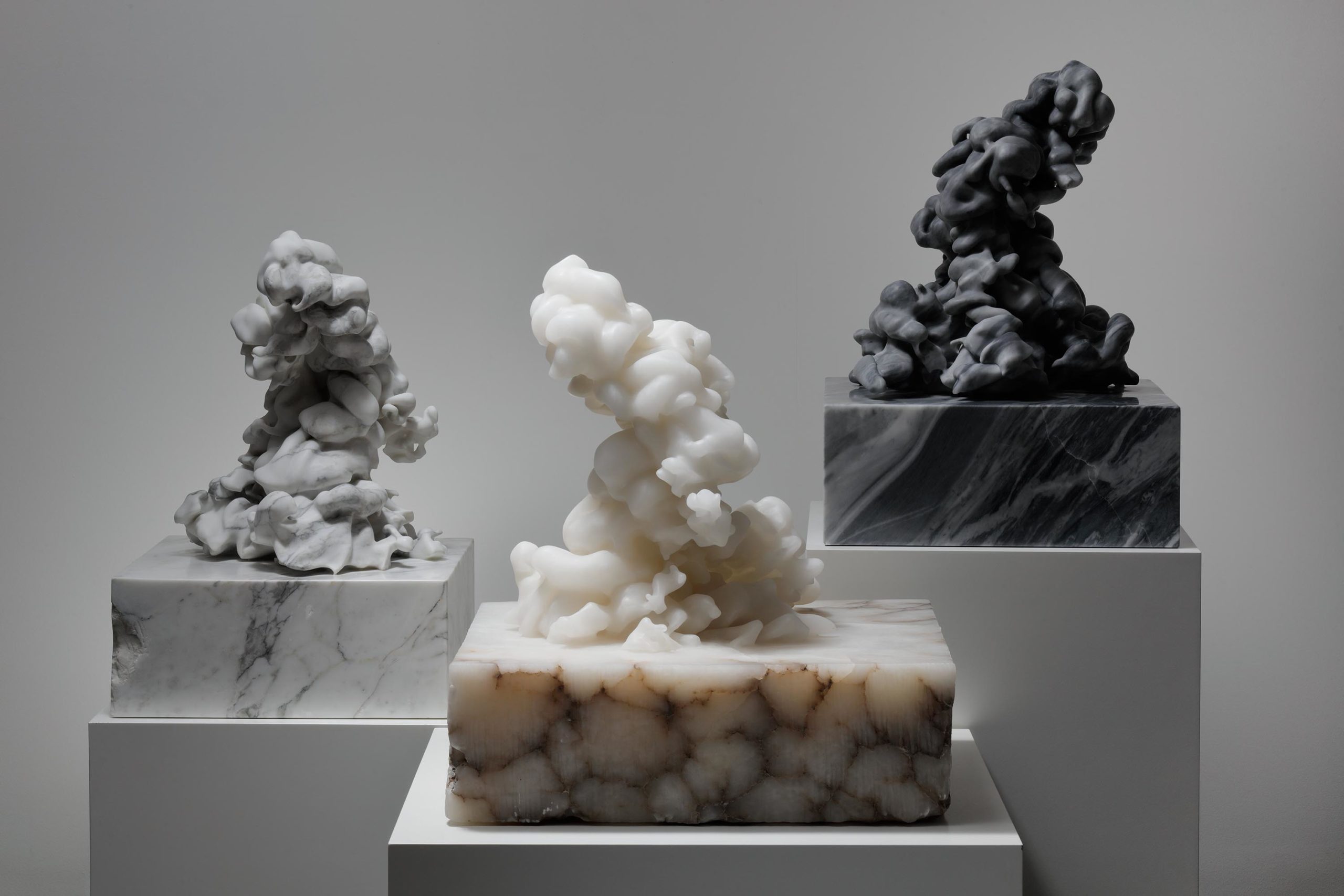
LaMonte first incorporated cloud forms in her sculpture shortly after completing her artistic training in 1990, making miniature representations of weather inside bell jars, and incorporating clouds as motifs on the blown glass dresses she created during this early phase of her career.
Over the following two decades, LaMonte completed several significant groups of sculptures focused thematically on the human body as portrayed through hollow garments. While aspects of weather and the natural world influenced LaMonte’s conceptions, it was not until 2015 that she returned to clouds as a central focus: this time with vastly more ambitious scale and complexity in mind.
LaMonte required a central model, from which she could develop her body of cloud sculpture. Climatologists at California Institute of Technology worked with LaMonte to create a cloud, first, by running a weather simulation on a supercomputer for several days. LaMonte then collaborated with the scientists to extract the shape, weight and size of a cumulus cloud from the simulation, which would become her primary model.
To realize her cloud as sculpture, LaMonte used its water weight measurement to calculate the size it would be if represented in stone and iron. As determined by the supercomputer, LaMonte’s cloud would be 815 meters, or just over a mile tall, and weigh 16 tons were it to appear in the sky. Rendered in stone, its height would be 12.5 feet tall. Cast in iron, which is denser than stone, the height would be about 9 feet tall. LaMonte used these height measurements to determine scales of a series of subsequently smaller cloud models in both materials: a 1:2 scale marble cloud at 6 feet tall, a 1:3 version that stands about 4 feet tall, an iron 1:6 scale cloud that measures about 19 inches tall, and so on.
On the visual qualities of Cumulus, LaMonte notes that “although based on a real cloud, the sculpture Cumulus looks decidedly biomorphic, like a mountain of nude figures. Baroque in its physicality, it suggests folds of flesh or fabric tumbling through space.” Accordingly, LaMonte has chosen marble from the same quarry used by Michaelangelo and Bernini to fabricate her clouds, as well as alabaster.
In creating her iron version of Cumulus, LaMonte lets weather play a direct role in the patination process. Casting the cloud in iron, she then places it outside to react to the weather events specific to its environment and develop a rich rusted surface. As LaMonte continues to create iron works, she will expose the casts to varying climates and types of weather to determine their patinas, imbuing these works with a geographic identity.
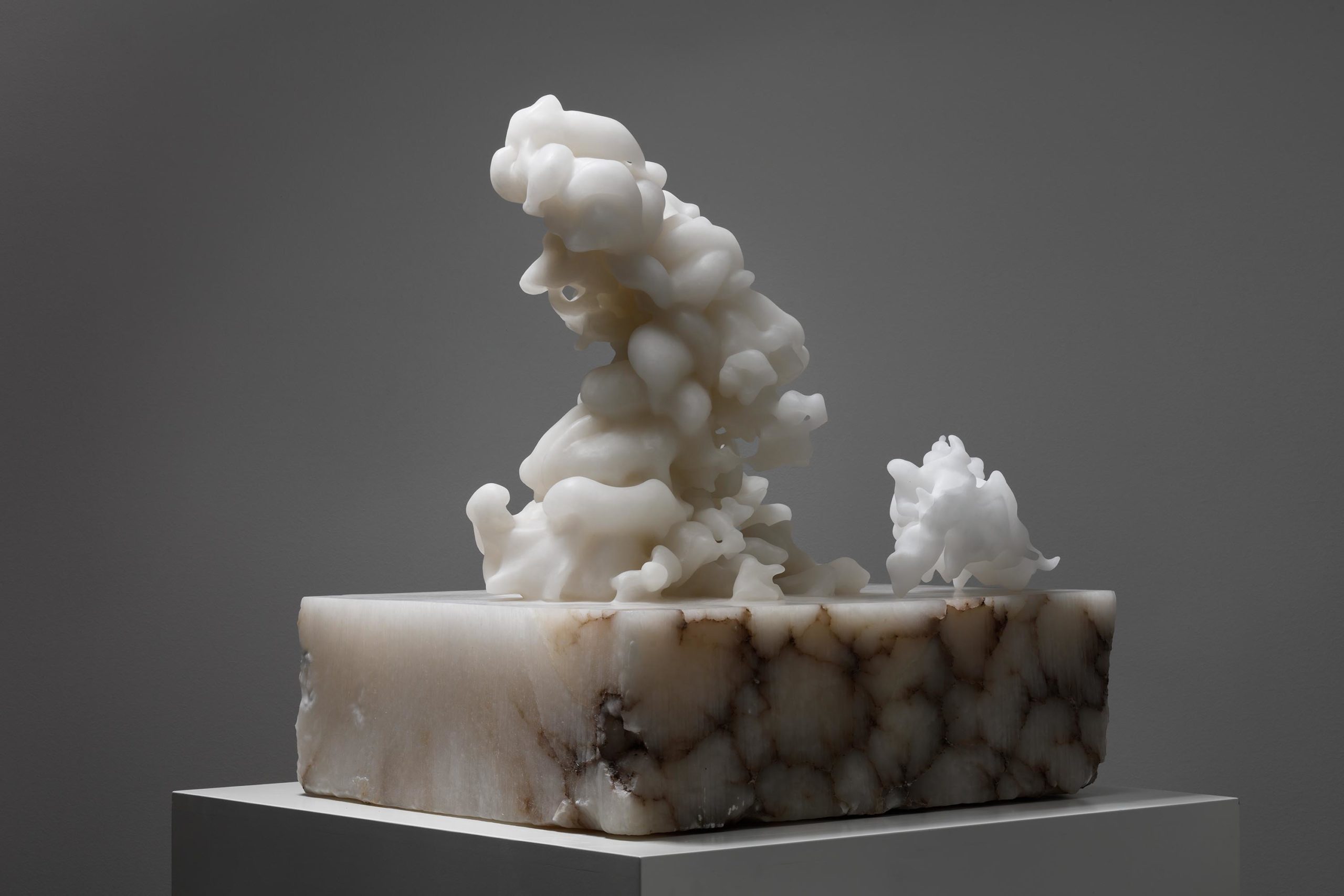
Karen LaMonte graduated from the Rhode Island School of Design in 1990 and created her first major work, Vestige (2000), during a Fulbright scholarship in Prague. Her works are included in important public collections, including the Museum of Fine Arts, Boston; the de Young Museum, San Francisco; Crystal Bridges Museum of American Art, Bentonville, Arkansas; and the Smithsonian American Art Museum, Washington, D.C. LaMonte’s works have been exhibited at the Chrysler Museum of Art in Norfolk, Virginia, and at Glasstress, an exhibition held during the Venice Biennale, in 2017 and 2019. Last year, her largest museum exhibition to date was mounted at the Hunter Museum of American Art in Chattanooga, Tennessee. LaMonte has received the Louis Comfort Tiffany Foundation Biennale Award and the James Renwick Alliance Master of the Medium award, and recently completed the Corning Museum of Glass Incorporated Specialty Glass Residency.
[1] Lucy Lippard “Clothes Make the Woman, Clouds Make the Sky,” p 23, Karen LaMonte, (New York: Rizzoli Electa, 2020).
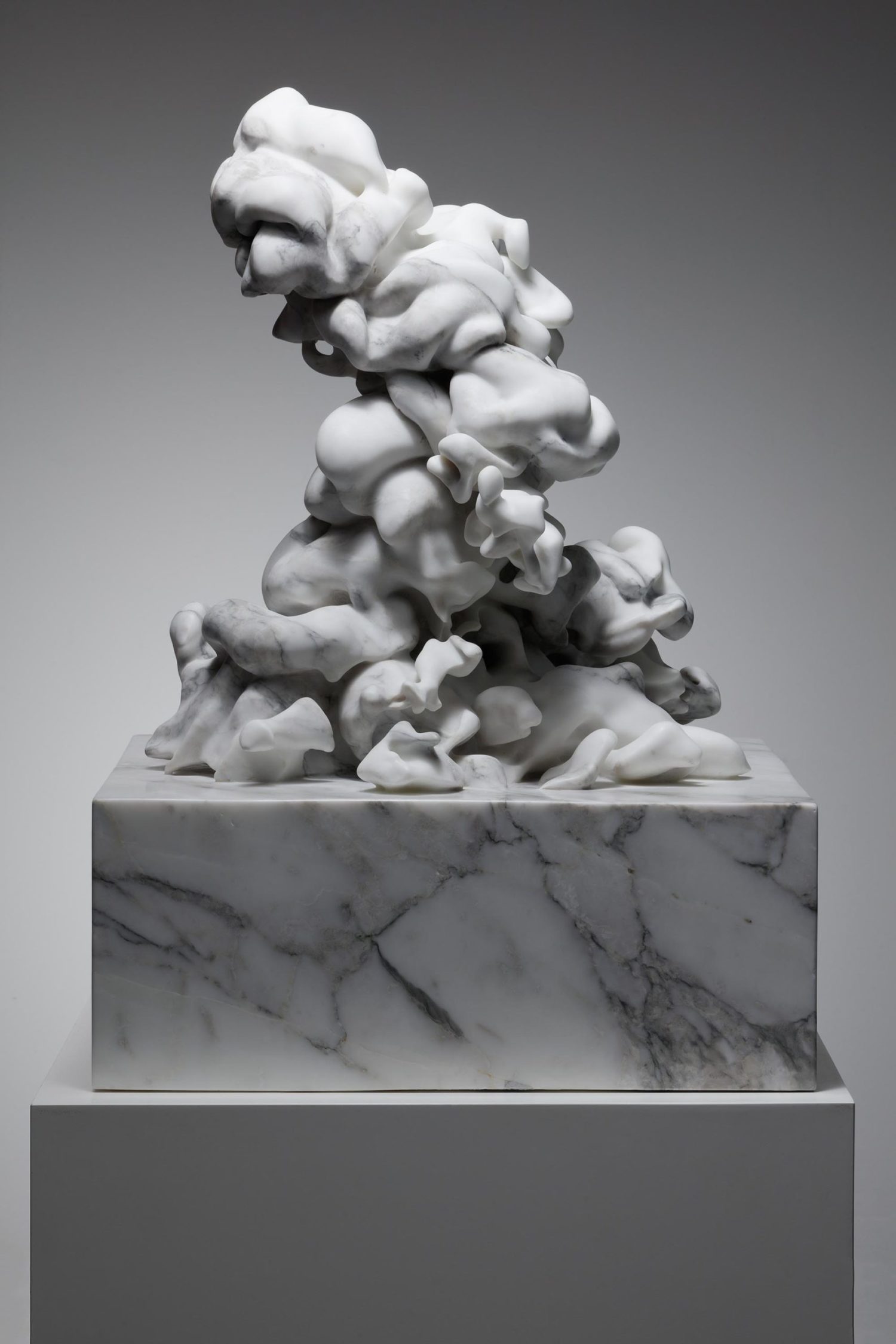
Karen LaMonte
Cumulus 1:8 2020
Bianco Calcatta Michelangelo
19 ¼ x 16 ½ x 17 ¾ inches
Plinth: 7 ⅞ x 19 ¼ x 18 ¾ inches
...unlike many artists (though Agnes Denes comes to mind), LaMonte is an avocational scientist or valuable scientific collaborator, bringing together the artist’s curiosity with the scientist’s factual caution.
Lucy Lippard on Karen LaMonte's scientific approach
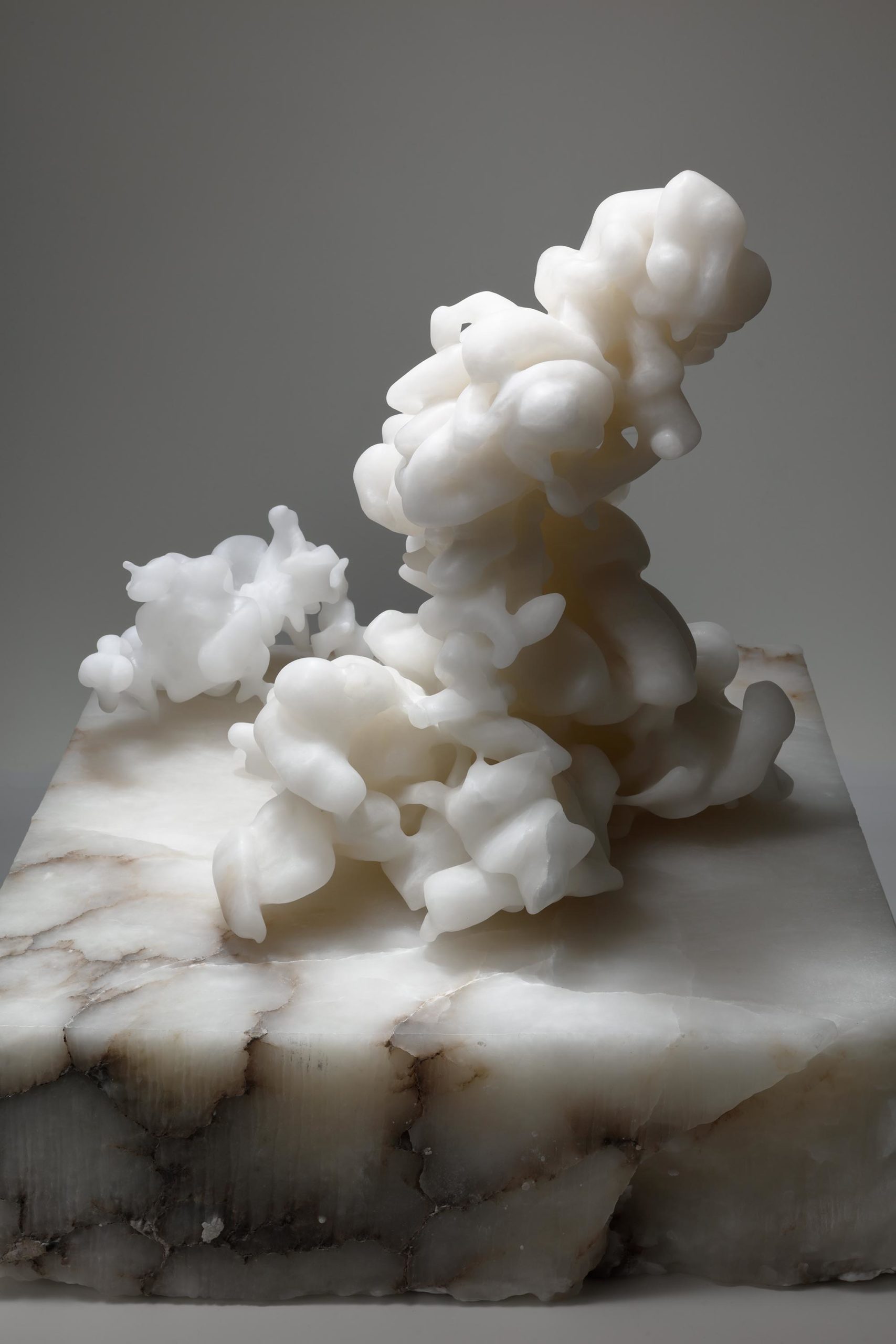
Karen LaMonte
Cumulus 1:8 2020
Alabaster
19 ¼ x 17 ½ x 20 inches
Plinth: 7 ¾ x 24 x 22 inches
Climatologists at California Institute of Technology worked with LaMonte to create a cloud, running a weather simulation on a supercomputer for several days. From this simulation, the scientists extracted the shape, weight and size of a cumulus cloud...LaMonte’s primary model.
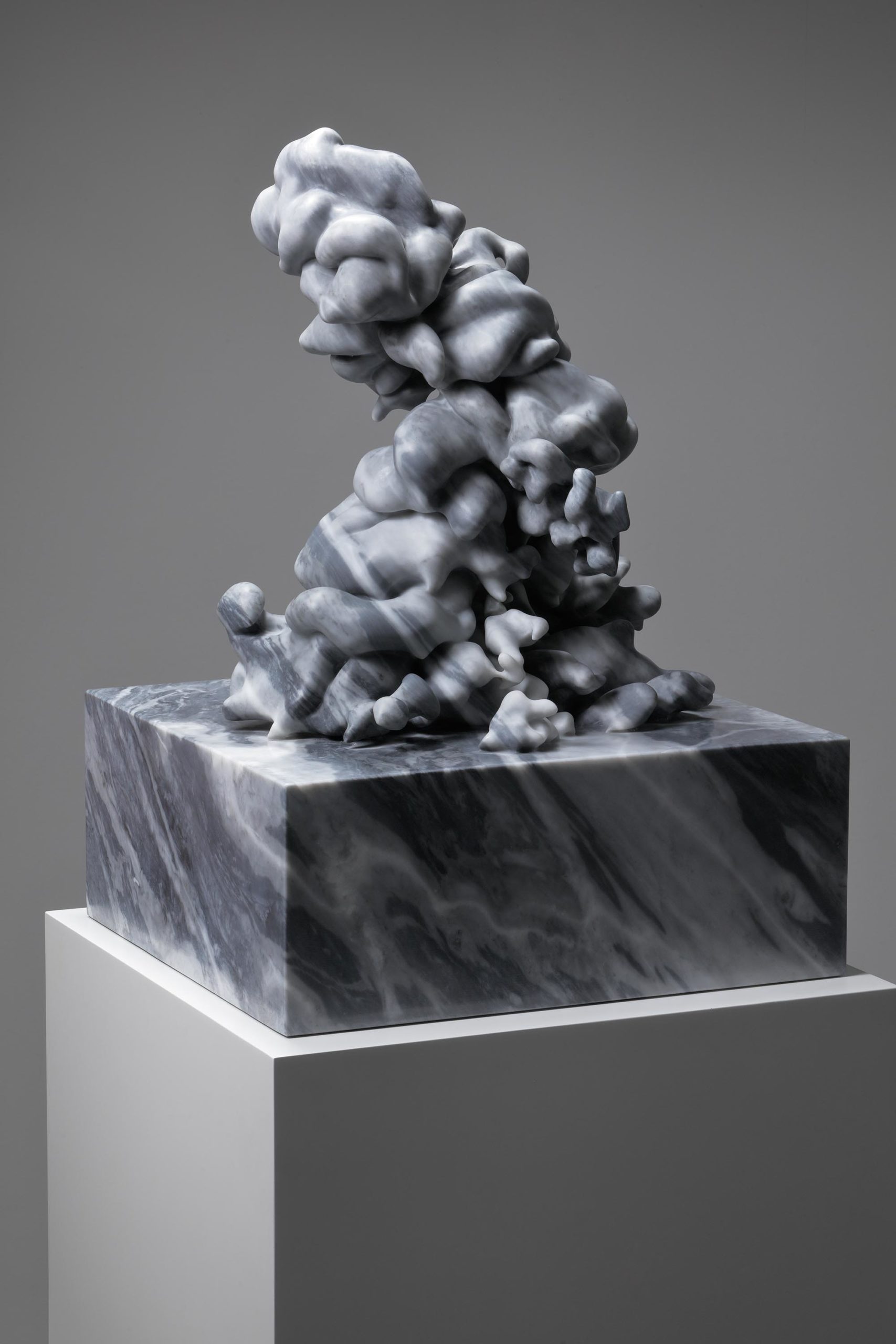
Karen LaMonte
Cumulus 1:8 2020
Bardiglio Nuvolato
19 ¼ x 16 ½ x 17 ¾ inches
Plinth: 7 ⅞ x 19 ⅝ x 18 ½ inches



